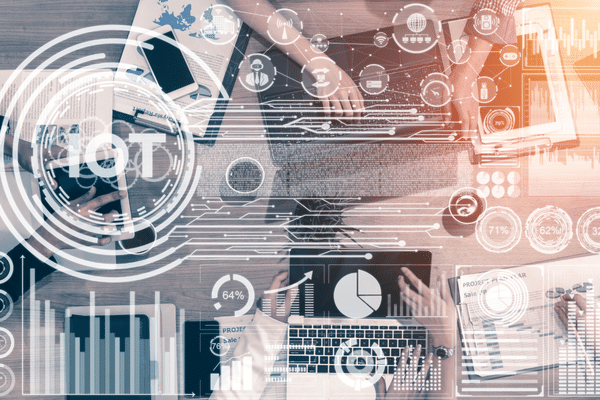
The Internet of Things (IoT) is the next phase of the industrial revolution. Technology allows physical devices to be brought into the digital domain.
IoT is the fusion of the “real world” with the “digital world,” allowing for accessible communication between people, objects and processes.
The application space for IoT is disparate. Different categories of users have different needs and expectations. As one of the categories of IoT users, businesses have needs that can accelerate the introduction of new applications. These needs include increasing productivity and ensuring business profitability and cost efficiency through better resource use, reduced downtime and better use of information in decision-making.
Using the IoT can result in efficiency gains and the creation of entirely new business processes or models. Below we will look at the top five real-world IoT applications across industries in 2022.
Real-world IoT applications
Smart city
Many governments plan to build smart cities that heavily use IoT in several areas like traffic management, public transportation, parking, utility billing and more. Smart cities can be referred to as large-scale IoT applications covering many problematic areas in a city.
While costly, it can be safe to say that the benefits far outweigh the cost. With the combination of sensors, GPS data collection and cloud platforms, it will be easy to monitor traffic conditions of a specific area, plan construction programs by predicting their impact on traffic and find alternative routes when necessary.
Smart home
Smart homes are one of the most popular IoT applications among consumers. Smart homes control home appliances, including lights, alarms and water flow from taps, while promoting home security and safety through elaborate smart security systems.
With smart homes, homeowners can control and monitor home processes through their smartphones, tablets and laptops. If you forget to turn off your oven or leave lights on while you are gone for the weekend, you can turn them off through your smartphone.
Smart homes allow you to manage all your home devices from one place.
Supply chain
Supply chain management has been undergoing modernization, thanks to low-power sensors, GPS and other tracking technologies that pinpoint assets as they move along the supply chain. Such information lets managers more effectively plan and more confidently reassure stakeholders about the location of items shipped or received.
If you’ve ever used Amazon or UberEats, you might be aware of the tracking system they use to track the delivery of your goods. Supply chains have been using IoT applications to help suppliers track goods in transit and get immediate customer feedback with the help of a rating system.
IoT systems can also help the supplier or drivers preserve the goods better during transit by communicating information about the temperature and pressure the item is being held.
IoT-connected factories
Smart factories use IoT technology to gather data on industrial processes and devices to form strategic plans and create more efficiencies. Machines, equipment and factory items are connected to sensors to improve analytics. Such technology can help factories reduce energy consumption, improve asset tracking and find equipment issues early to protect profits and enhance supply chain productivity.
Environmental
Connected devices can collect IoT data indicating the health and quality of the air, water and soil, fisheries, forests and other natural habitats.
IoT delivers the ability to not only access significantly more real-time data about the environment at any given time and place, but it also enables a range of organizations in various industries to use that data to extract actionable insights.
Such information can help government agencies better monitor and predict natural disasters like tornados and better manage and protect land and wildlife populations. Companies can use this data to better limit their carbon footprint, more effectively document compliance with environmental regulations and more efficiently plan around weather conditions that affect their business.
Conclusion
The IoT can improve environmental sustainability, enhance security, improve business efficiencies across various sectors and promote convenience within everyday tasks and operations.
It has given businesses and governments many options to improve their work and become more efficient. Plus, for IoT professionals, a bright future shines on the horizon with new opportunities coming up soon.

